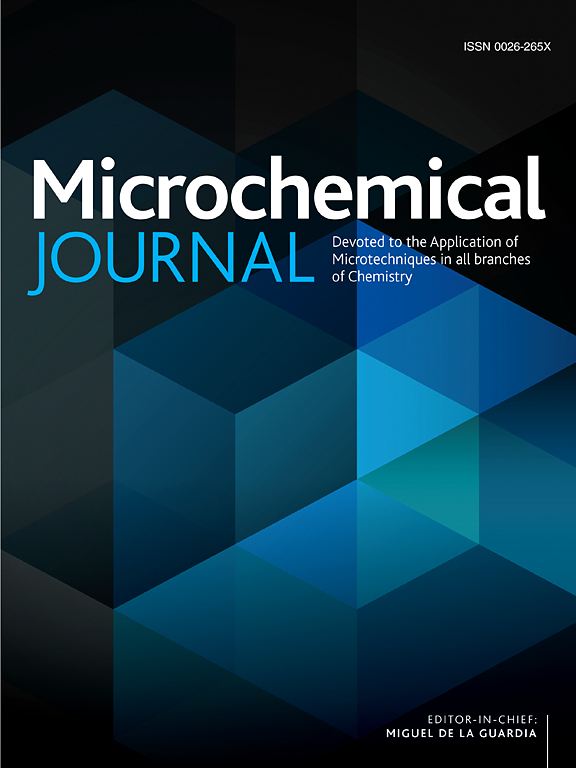Identification of sulfur-fumigated Shanyao by near-infrared spectroscopy combined with DD-SIMCA
IF 4.9
2区 化学
Q1 CHEMISTRY, ANALYTICAL
引用次数: 0
Abstract
Shanyao (Chinese yam) is an important edible biologic medicine, known as the Chinese “little ginseng”, which is extensively sold in vegetable and medicinal material markets. The Shanyao product sold on the market is often sulfur-fumigated for improving its appearance and anti-corrosion and pest resistance effect. It is of great significance to develop a method for distinguishing whether Shanyao is sulfur-fumigated or not. This work explores the feasibility of combining near-infrared (NIR) spectroscopy, pre-processing, feature selection and class-modeling for distinguishing between sulfur-fumigated and non-fumigated Shanyao. Different concentrations of sulfur dioxide and fumigation duration are considered. A total of 200 simulated samples are prepared. Two filtering-like algorithms, i.e., Relief and MRMR, and data-driven soft independent modelling of class analogy (DD-SMICA) are used for spectral feature selection and class-modeling of the target class, respectively. The results indicate the best one-class model can be obtained by a smaller subset of original features on the pre-processing spectra. It is also found that different duration had little effect on the condition of the same concentration of sulfur dioxide. In addition, it seems necessary to perform feature selection, but two methods of feature selection present similar results. It can be concluded that the proposed procedure is a feasible for identifying the sulfur-fumigated Shanyao, which is a reference for quality control of other systems.

求助全文
约1分钟内获得全文
求助全文
来源期刊

Microchemical Journal
化学-分析化学
CiteScore
8.70
自引率
8.30%
发文量
1131
审稿时长
1.9 months
期刊介绍:
The Microchemical Journal is a peer reviewed journal devoted to all aspects and phases of analytical chemistry and chemical analysis. The Microchemical Journal publishes articles which are at the forefront of modern analytical chemistry and cover innovations in the techniques to the finest possible limits. This includes fundamental aspects, instrumentation, new developments, innovative and novel methods and applications including environmental and clinical field.
Traditional classical analytical methods such as spectrophotometry and titrimetry as well as established instrumentation methods such as flame and graphite furnace atomic absorption spectrometry, gas chromatography, and modified glassy or carbon electrode electrochemical methods will be considered, provided they show significant improvements and novelty compared to the established methods.
 求助内容:
求助内容: 应助结果提醒方式:
应助结果提醒方式:


